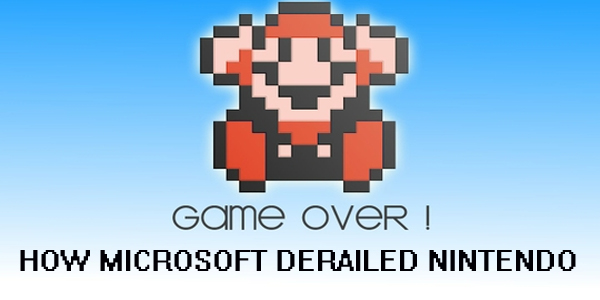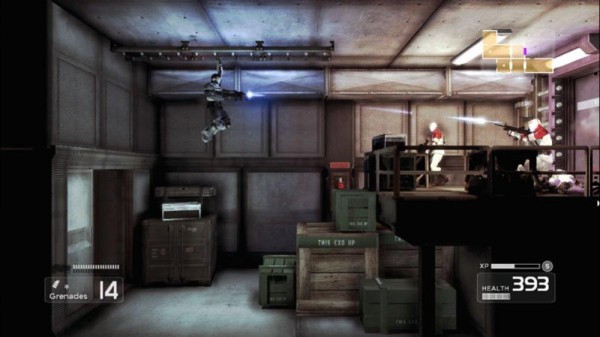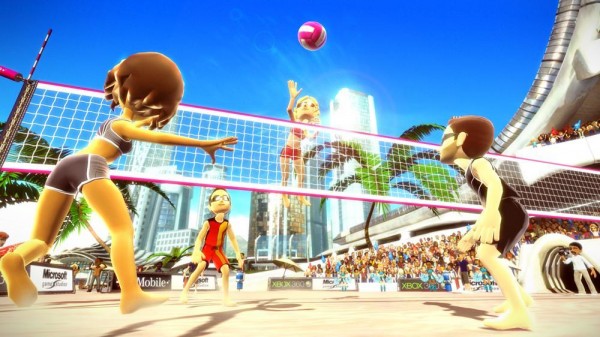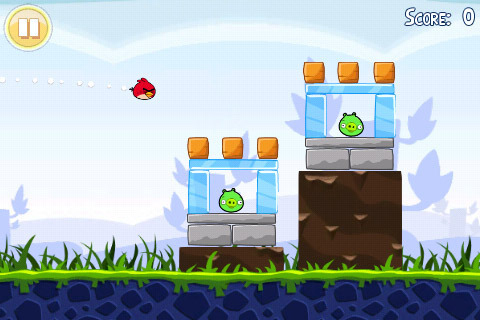How Microsoft derailed Nintendo
It’s no secret that Nintendo isn’t in the best shape right now. After finding great success with the Nintendo DS, the Wii launched and got the masses talking about Nintendo once again. Then something happened. The Wii’s sales plummeted, the Nintendo 3DS launched poorly, and investors are questioning Nintendo’s direction with their next console, the Wii-U. Nintendo is desperately trying to gain back momentum. What happened to Nintendo’s mojo? Well, Microsoft, the Xbox 360 and Xbox Live Arcade all have something to do with it.
To truly understand what’s at play here, we have to first consider why Nintendo has historically been a successful company. Nintendo has always excelled at making games that appeal to the masses. Nintendo makes games that anyone can pick up and play. Mario has been a part of our living room since 1983 because Mario games have always been easily approachable for anyone who wants to sit down and play. Whether it’s you, your little sister, your best buddy or your dead beat uncle, Nintendo makes products for everyone. When Nintendo is succeeding, it has always been the case. So why are the tables turning?
Master Chief is the new Mario
The truth is, other companies are succeeding where Nintendo used to. Let’s look at software. Nintendo’s franchises have always been one of its strengths. Brands like Mario, Zelda, Donkey Kong, Mario Kart, and Super Smash Bros, are household names. What makes them so popular with mainstream audiences? It goes back to being easy to approach. If you’re reading this article, at some point in your life you probably played Mario Kart with someone who doesn’t regularly play videogames. Anyone can sit down and play Mario Kart, or Mario Party, or have loads of fun. These “casual gamers” eventually invest in a Wii or a Nintendo DS because of these recognizable franchises and simple to play games.
What Microsoft and others have done is completely eliminate Nintendo’s advantage. On Xbox Live, it’s so simple to hop online and download games straight from Xbox Live Arcade. There is a countless number of games available on XBLA for the casual gamer at very affordable prices. From classic franchises like Bomberman and Frogger to new original classics like Castle Crashers and Shadow Complex. You don’t even have to leave your house, just complete a quick download and “game on”. There’s something for everyone on Xbox Live Arcade. Utilizing this strategy of putting simple, fun, and affordable games in front of players through Xbox Live Arcade has Microsoft digging into Nintendo’s user base.
While it’s true that Microsoft still doesn’t have many casual “E for everyone” franchises as well known as Mario or Pokemon, Microsoft doesn’t need to. While they have certainly made their attempt to replicate Nintendo’s success in this area with games like Banjo-Kazooie: Nuts & Boltsand Viva Pinata, Microsoft has taken a different route to the casual gamer’s heart. Microsoft has taken franchises like Halo, Gears of War, and Fable, and made them mainstream. While technically more “mature”, these games are just as easy to pick up and play as anything Nintendo puts out, and arguably more exciting. Instead of anticipating the new Legend of Zelda, masses of fans from teenagers to grown men and women are now anticipating the next Call of Duty. The landscape is changing and no one realizes this more than Microsoft.
Waving hands, arms, and waggle wands
Then comes the way we actually play games. All eyes were on Nintendo when they released the Wii. It was supposed to make games easier to play and more accessible than ever. In the beginning, it worked. The Wii launched very successfully and pulled in millions of new gamers. But the Wii’s restrictions and shortcomings were quickly exposed. Not only does the Wii’s control method make it difficult for developers to release multiplatform games on the Wii without completely redesigning their entire game, the Wii is also a generation behind in graphical power. While Nintendo opened up plenty of new creative opportunities for developers with the Wii, they also designed their own third-party support problem for the third generation in a row.
Microsoft responded to the Wii in a big way with Kinect for the Xbox 360. While playing with a motion sensitive remote was supposed to be easy, how about playing with nothing at all? With Kinect all you need is yourself. You become the controller. While Kinect has certainly had its fair share of bumps in the road, it has been a success in its own right. While it may not have crushed the Wii yet, it is appealing to the same market as Nintendo’s Wii, and Microsoft once again has the mainstream talking about their product, not their competitors’.
Connectivity, connectivity, connectivity (And not the GameCube to Game Boy Advance kind)
Let’s take a look at online gaming. When the online gaming scene really started to pick up stream, console makers naturally started to look into it. Microsoft and Sony embraced online gaming, while Nintendo viewed it as a fad. Fast forward a few years and look at Xbox Live. Xbox Live is extremely simple to use. It’s never been easier to hop online and play games online with your friends. In addition, it’s a one-stop service where you can download entire games, watch movies and television shows, listen to music, use social networking tools, and more. Xbox Live is constantly expanding, and it’s always straight forward. Microsoft succeeded with Xbox Live where Nintendo used to ; In providing a service that’s approachable and simple to use.
X-Boys, Windows Phones, and fruit
Many wonder why Microsoft doesn’t go for the kill, and swoop in on the handheld gaming market. The truth is, Microsoft may see the future of handheld gaming more clearly than anyone else. The Nintendo 3DS has performed very poorly thus far. The consensus is that the device still doesn’t have a lot of great software, and its main focus, 3D is both unimpressive and may be fading from popularity altogether. Nintendo is certainly having trouble getting people interested in the 3DS because of its own missteps, but there’s another underlying reason; The mobile market.
Handheld gaming is changing. Instead of buying an expensive handheld console such as the Nintendo 3DS, millions of people out there have turned to playing games on devices they already own; Cell phones and tablets. It was recently announced that the mobile game Angry Birds has been downloaded over 350 million times. Very rarely do even the most successful console games break the ten million mark. Companies like Apple have made it extremely easy for developers to release games and apps on cell phones and tablets, devices that today’s society demands people already own. If you can play great games on your cell phone or tablet that you already own for a very low price, why would you go out and buy a dedicated handheld device for gaming such as the Nintendo 3DS? Nintendo is losing the handheld battle. The casual gamer is moving on from paying $30 for Mario Kart on Nintendo’s handheld, and is instead paying $.99 for Bejeweled on their iPhone. The very definition of the word “gamer” is changing and while it’s Nintendo who has always sought to reach out to new audiences, their business model is failing to do so.
Competition and capitalism
If Nintendo can’t regain their momentum in the handheld market, and if the Wii-U doesn’t succeed, Nintendo may be in very big trouble. Investors are already calling on the company to start making games for mobile phones. Could the oft-rumored, “Nintendo goes third-party” scenario actually become reality? It might, or it might not. But there’s something else emerging from the mist here; It’s Microsoft who is pulling in new gamers. It’s Microsoft who’s making games that anyone can pick up and play. It’s Microsoft who is providing services that make connecting with one another easier than ever. It’s Microsoft that has become the new Nintendo.





